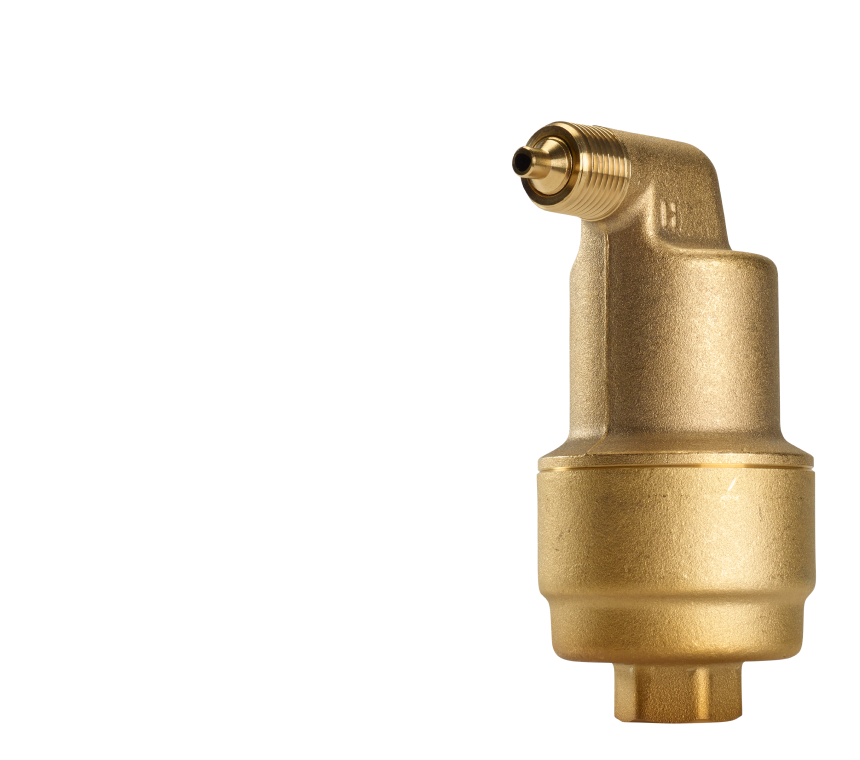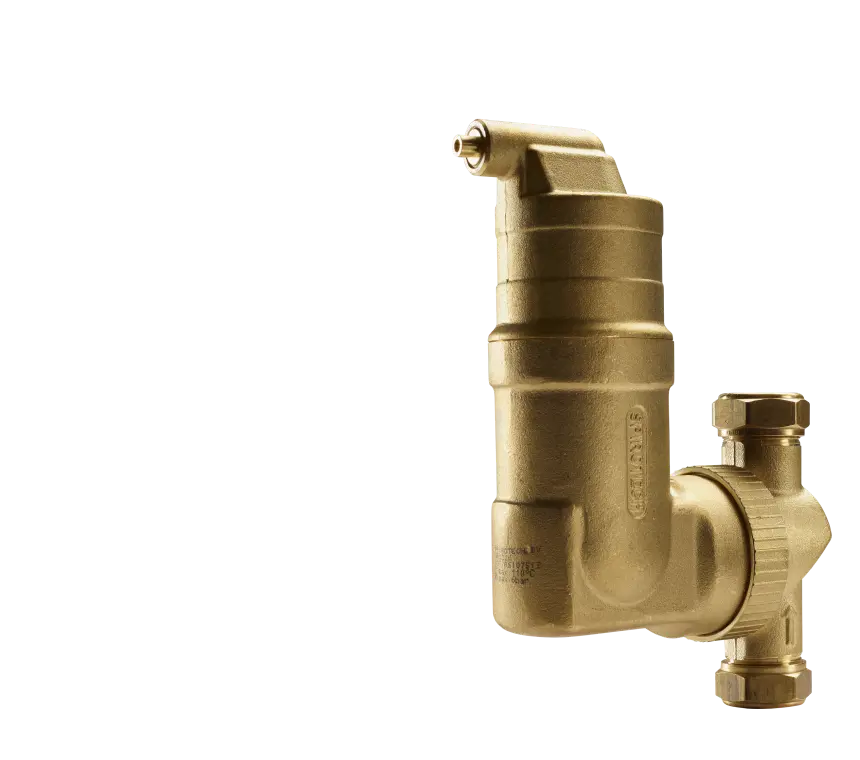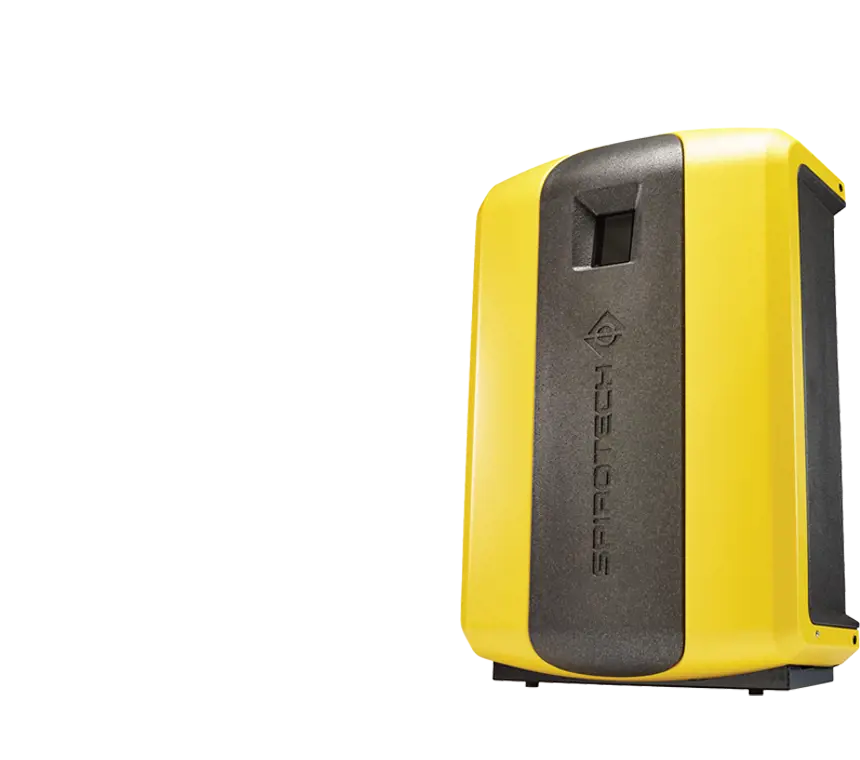Why should you remove air from your system water?
In a heating or cooling system, heat is transported from the heating or cooling unit via the system fluid (mostly water). Stacked air in the system will harm the performance and efficiency of your system as it disturbs the free flow of the system water.
Many of you will already know that when you (re)fill and pressurize a heating system with tap water, you need to ensure that air is removed from the system. You may have to repeat this process several times to ensure the system is filled and pressurized. However, the pressure of the system can fluctuate based on the temperature of the system water, thus, air reentering the system through connections, valves, etc.. In part, depending on the pressure and temperature in the system, the air is already present in water.
Air in the system is frequently responsible for costly and high-maintenance failures
Save up to 13% on your gas consumption!
Independent research has shown that preventing air and dirt in your heating system can save you a lot of money. Using a SpiroVent RV2 air deaerator and a SpiroTrap MB3 dirt separator in your heating system can save you up to 13% on your gas consumption.
Do you want to know how you can not only save money but also optimally protect your heating system?

Problems caused by air in your system
Air causes loud noises in radiators, heat exchangers, pipes and pumps. It makes it extremely difficult to adjust systems and it promotes corrosion, and thus, the formation of dirt and magnetite. Air in the system leads to a significant reduction in heating and cooling performance, and premature wear and tear on major system components, or, much worse, a blockage.
This, in turn, could lead to a complete failure of the system and all the hassle that comes with it, such as dissatisfied consumers and residents. When a system is not equipped with deaerators, problems in the short or long term are unavoidable.
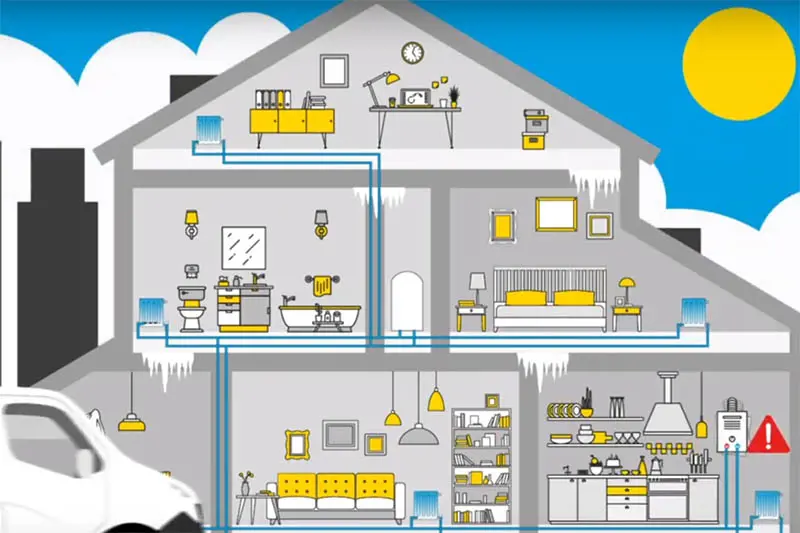
It makes perfect sense covering every eventuality
If it is impossible to predict where air will be released in a system, how can you know where to install a deaerator? This is the most important reason for choosing a vacuum degasser over a microbubble deaerator. Using a deaerator in the above situation is very likely to cause air problems further down the road.
Situations where it is impossible to predict gas accumulation can include
- Large static heights above the hottest point in the system
- Underfloor heating with hoses that do not run completely horizontally
- Low temperature heating with a low flow temperature
- Heat pumps with a low heat transfer temperature in the heat exchanger
The 3 appearances of air in system water
As already mentioned, system water will always contain air, which can be present in 3 different ‘appearances’:

Free Air
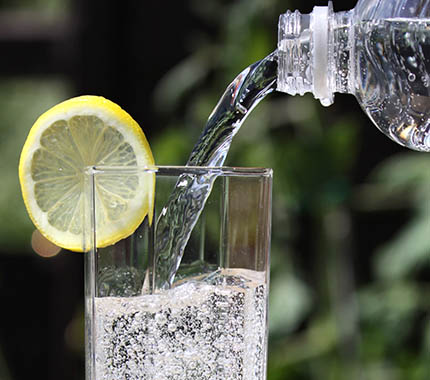
(Micro)bubbles

Dissolved gasses
What is vacuum degassing?
A vacuum degasser subjects system water to very low pressure, far below atmospheric pressure, and this releases the dissolved gasses.
Water, by its very nature, absorbs gases easily until saturated. The level of saturation depends on the pressure and temperature. At low pressures, less gas can be absorbed. Vacuum degassing treats water from the system in small set volumes. The water is subjected to vacuum pressure, releasing all the dissolved gases. It is a bit like opening a fizzy drinks bottle. As soon as you start to unscrew the cap, you hear and see the gas appear.
The small volumes of degassed water are returned to the system. The system water is now “hungry” for gas and quickly dissolves any gas pockets it encounters in the system. The saturated water is fed back to the degasser and once again subjected to a vacuum to remove the dissolved gases.
Vacuum degassing uses Henry's law, the affect of pressure and temperature on the absorbent capacity of water in degassing situations, to keep the entire system free of air/gas.
Our solutions for effective air removal
Meet our new family member, the SpiroVent Superior S250
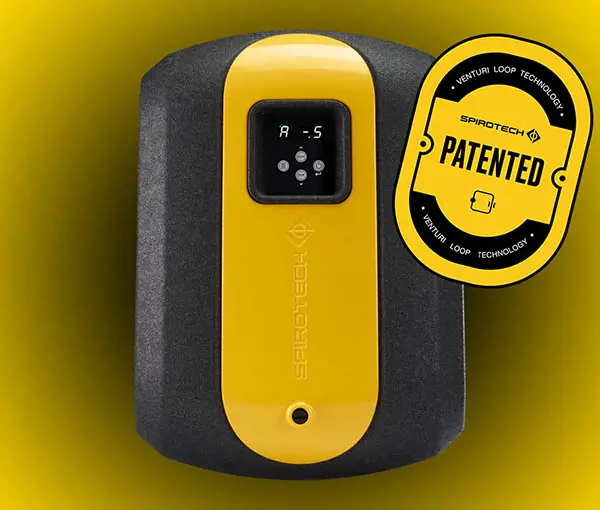
Meet the unique, smooth and powerful new addition to our family of vacuum degassers, the SpiroVent Superior S250.
The SpiroVent Superior S250 has been designed for light commercial applications, in other words, for smaller volume systems. Adding this product expands the degassing family, so that we can accommodate the growing demand from new systems which operate at lower temperatures.
The solution that even sounds perfect!
The word is out about our vacuum degassing technology being quieter than ever. The almost silent secret is kept by our patented Venturi Loop, a speed-controlled centrifugal pump combined with a Venturi.
The positioning of an air vent, air deaerator or a vacuum degasser in your system
Air vents are best positioned at the highest point in the installation to prevent air pockets. Air deaerators are preferably positioned at the hottest point of the installation, the point where the water leaves the heater or where the water enters the cooler.
Since a Superior uses depressurization for dissolved gasses removal, the position isn’t that crucial. A vacuum degasser should be used for systems:
- with many branches and a low flow velocity or
- systems with a small temperature differential, or
- where an inline air deaerator cannot be installed, or
- where it cannot be predicted where gases are released from the water or
- when that point has a very low flow rate.
